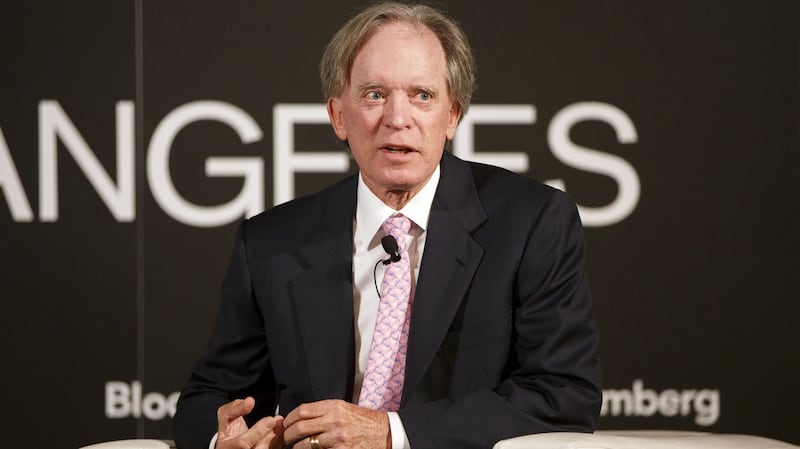The FAANG stocks – Facebook, Amazon, Apple, Netflix, and Google – have led markets higher in 2017, posting year-to-date gains ranging from 27 per cent to 34 per cent. With everyone going gaga for technology, is the US bull market too dependent on high-flying tech stocks?
The Nasdaq 100 is up over 20 per cent in 2017 and hasn’t closed below its 50-day average since December – the longest streak since 2011. Hedge funds have piled into the FAANG stocks, which have gained almost four times more than the S&P 500 in 2017.
However, the rally remains broad. More than one in five S&P 500 stocks is up over 20 per cent this year, Bespoke Investment Group notes. Almost half have gained over 10 per cent. Some 70 per cent of stocks are trading above their 200-day average.
Technically, nothing strange is going on, says Goldman Sachs, which brands reports of poor market breadth as “fake news”. The notion the bull market is thinning, reliant upon a narrowing number of large-cap technology stocks, is just not true.
It’s all going up in the world
Globally, market breadth is even more impressive; stocks everywhere are rising.
In Europe and Japan, BlackRock noted recently, over 80 per cent of stocks are trading above their 250-day average. The proportion of stocks in uptrends is at two-year highs in several major indices. Every major European market is trading at 52-week highs, while emerging markets have been on fire in 2017.
Approximately a third of the MSCI World Index’s gains in 2017 have come from the tech sector. That sounds lopsided, but it’s not atypical. BlackRock went back to 1995 to analyse the contribution of the best-performing sector to annual returns, and found 2017 is little different to the average year.
The current exuberance is supported by profits, with eight out of 11 global stock market sectors expected to see earnings growth. For the first time since 2010, all major regions saw double-digit earnings growth in the first quarter of the year.
It’s rarely a good idea to bet against momentum. There is, as BlackRock put it, “room for this to run further”.
Bill Gross’s warning comes with a warning

Iconic bond manager Bill Gross was in the headlines last week after warning US asset markets are more risky than at any time since before the 2008 financial crisis.
“Instead of buying low and selling high,” warned Gross, “you’re buying high and crossing your fingers.”
Maybe. Then again, maybe not. Ordinary investors are often spooked when investing legends like Gross issue dire warnings, but even the best names often get things badly wrong.
In September 2002, at the bottom of the bear market that followed the dotcom peak, Gross said stocks faced a further 40 per cent fall. He was pessimistic on the long-term outlook for stocks in February 2009 (“things will never be the same again”), just before an eight-year bull market began. In 2012, he famously warned the “cult of equities” was “dead”. His bond predictions have been similarly off the mark in recent years.
Unlike Gross, valuation expert Aswath Damodaran last week argued stocks are expensive relative to history but not relative to alternative investments.
“We could be on the verge of a sharp surge in stock prices or a sharp correction,” said Damodaran, “entering an extended bull market or on the brink of a bear market.”
Damodaran’s conclusion is frustrating but appropriate. No one – and that includes Bill Gross – has a crystal ball.
Will Trump economic adviser get it right this time?
All of us make mistakes. For Kevin Hassett, Donald Trump's nominee to be the chair of his Council of Economic Advisers, that mistake was to co-author Dow 36,000, the infamous 1999 book which predicted stocks would ascend to heaven just as they began their long descent into hell.
Hassett last week described the book as a “youthful indiscretion” before then back-pedalling. “As youthful indiscretions go, it wasn’t such a bad one,” he said. He wrote the book to make the case for long-term investing, adding: “Looking back, folks who bought and held were glad that they did.”
Oh, please. The main premise of Dow 36,000 was that stocks, which had never been so overvalued, were actually dirt cheap. They could "quadruple tomorrow and still not be too high" and were "in the midst of a one-time-only rise to much higher ground".
Instead of quickly hitting 36,000, the Dow fell to 6,500 by March 2009. That would have been a good time to remind investors of the need to sit tight and hold on. Unfortunately, in the very week markets bottomed, Hassett wrote that president Obama had declared a "war on business", adding: "No wonder that markets are imploding around us."
Buy at the top and sell at the bottom 10 years on – as youthful indiscretions go, it was a pretty bad one.













